Getting in great shape shouldn’t feel boring or dull. In fact, the best workout plan should include a range of different workout types that keeps you on your toes and challenges your body in different ways. It should also be easy to understand and implement while taking into account other fitness factors, like what to eat.
Can you actually have all of these at once? Yep! It just takes knowledge of nutrition, the different forms of fitness, and how to combine it all together. In this article, we’ll show you the basics of how to do that.
Are you ready to step up your fitness and health? Below is an overview of everything you need to know to get started—starting with nutrition essentials, followed by a breakdown of the best workout types.
Know Your Nutrition: The First Step in Any Workout Plan
Many people mess up in this area: eating well. Looking and feeling great isn’t just about the workouts—what you eat matters a lot too.
You’ve probably heard about the 80/20 rule with weight loss: how it’s 80% nutrition, 20% exercise. Both are really important, but to get real results with your workouts, you must have your nutrition down.
It doesn’t matter if you’re looking to lose weight or build muscle or both. The fuel you give your body must be balanced and high-quality. And all starts with the three macros: carbohydrates, fats, and proteins.
Carbohydrates for Energy and Performance
Carbs are the preferred energy source for your body. They get a lot of bad rap these days, but here’s the truth: If you’re very physically active, you need some form of carbs to properly fuel your workouts and to recover afterwards.

There are three main types of carbohydrates:
- Starches
- Fiber
- Sugars
Starches are what we call complex carbohydrates or sometimes “good carbs.” Complex carbs are found in whole plant foods like potatoes, beans and legumes, fruits, vegetables, and grains like rice and oatmeal. They contain fiber (which we’ll talk about next) and important vitamins and minerals to support your health.
Fiber is a carbohydrate found in plant-based foods that your body can’t digest. Fiber is good for you because it provides bulk and roughage necessary for good digestion and for a healthy gut. Vegetables and whole grains are good sources of fiber and digestible carbs.
Sugars are simple carbohydrates your body digests very quickly. Sugars are what complex carbohydrates break down into.
The three simple sugars are:
-
Glucose: the sugar starches break down into
-
Fructose: the sugar found in fruits and fruit juices
-
Galactose: the sugar found in milk products
Carbohydrates with glucose are the best for fueling your workouts. Fructose can be useful sometimes, but it can cause digestive issues in some people when consumed right before a workout.
For the bulk of your carbs, choose whole-food starches rich in fiber.
The amount of carbs varies depending on your individual needs, so it can take some experimenting to find what works best for you. Some people can eat high-carb all day and thrive, while others do well on a more moderate or even lower carb diet.
Either way, the best time to consume carbs is around the time of your daily workouts so your body can utilize them for energy and recovery.
Protein for Building and Repairing Muscle
While carbohydrates and fats provide energy for the body, proteins are the most important nutrient for staying lean and getting in shape.
Protein helps your body:
- Build and repair muscle
- Maintain your immune system
- Keep healthy hair, skin, and nails
- Hormone regulation
- And much more!
Your body is constantly breaking down and building up new proteins for these functions. And to get in shape, you need to build more lean muscle than you break down. So obviously, getting enough protein throughout your day is crucial.
A good rule of thumb is: eat 30-40 grams of protein every three to four hours. This is best for protein synthesis and also helps keep you satisfied throughout the day.
That much protein might sound like a lot, but it really breaks down to just 3-4 meals per day— such as breakfast, lunch, dinner, and a fourth snack of meal at some point.
Fats for Heart and Body Health
We were taught for many years that too many fats are bad for health—that they’ll make us fat and even hurt our heart. But that’s been debunked. We now know a variety of healthy fats are essential for overall health.
Fats serves several functions in your body, including:
● Protecting your heart
● Supporting a healthy metabolism
● Fighting depression
● Supporting body tissues
● Facilitating hormone production
● Absorption of important nutrients (like vitamin A and vitamin D)
● And much more
Good fat sources include high-quality oils like extra virgin olive oil, coconut oil, and flaxseed oil, nuts and seeds, avocados, fatty fish, and eggs. These give you a good balance of monounsaturated, polyunsaturated, and saturated fats that are important for a balanced diet.
Fish, walnuts, flax seeds, and chia seeds are also good sources of omega-3 fatty acids, essential fats you must get from food that help fight inflammation in the body.
Don’t Forget Water
The last essential nutrient we’ll discuss here is water.
All biochemical reactions in your body happen in water, and you need plenty of it to function properly.
Water helps lubricate your joints and tissues, regulate your body temperature, transport important materials in the body, and is necessary for digestion and absorption.
You lose water about 1-2 liters of water every day through various bodily processes like breathing. When you sweat during intense workouts (and don’t worry—we’ll get into those next!), you lose even more water. Dehydration causes a range of problems, including constipation, lack of energy, overheating, and massive changes in fitness performance.
This is why it’s so crucial to stay hydrated by drinking plenty of water (about three liters for most people) daily. Eating plenty of water-rich fruits and vegetables can also help replenish lost hydration in your body.
Best Types of Exercises for Men and Women

So, what is the best workout? In the program
Unleash Your Beast, we strategically use a mixture of free weight workouts, resistance band workouts, and bodyweight workouts. All three are necessary for an efficient workout plan.
Free Weight Exercises for Coordination and Engagement
Free weight exercises use dumbbells or barbells to perform each movement. Free weight workouts are generally much better than machine workouts because they’re way more versatile.
Think about doing an overhead press with a dumbbell in each hand versus doing an overhead press while sitting in a gym machine. With the dumbbells, besides working the target muscles, you must engage your core and work your stabilizing muscles to perform the exercise.
Plus, a shoulder press machine will move upwards no matter how you push it—but free weight shoulder presses require you control the movement at all times. This forces you to use all three planes of motion to control the weight.
Basically, with free weight workouts you’re moving as you do through normal life without being restricted to a single plane of motion.
For these reasons, free weights provide the best workout for increasing functional strength and building a knockout physique.
Resistance Band Exercises for Better Range and Versatility
While free weights have a huge functional advantage over weight machines, resistance bands have a benefit over free weights: constant tension.
During most weight workouts, there’s a period of no resistance—like the top of the movement or in between reps. But with resistance bands, you don’t get that chance to rest during the exercise—and that brings you a range of additional benefits, like these:
Better Range and Muscle Utilization
To maintain the correct movement pattern for a resistance band exercise, you must constantly stabilize yourself against the tension of the band—which challenges your muscles in multiple directions.
Plus, with each rep you’re increasing the strength of the target muscle group while also strengthening your supportive and stabilizing muscles. These are often neglected in traditional training exercises and routines.
Higher Versatility
Resistance bands are more versatile because
they can be easily adjusted (especially if you use them with the
Gorilla Bow). You can quickly increase the band thickness to make the exercise harder or remove a band to make it easier.
Plus, resistance increases the more the band stretches, activating more of your muscle fibers with each movement. This has shown benefit for athletes too. A study from Louisiana State University found baseball pitchers increased their rotator cuff muscle strength and integrity better with elastic band training versus free weights [*].
Resistance bands are great for travel too. No need to lug around dumbbells or other bulky equipment.
Basically, resistance bands make it easier to get a full body workout—anywhere—at a high training intensity!
Safer than Other Workout Equipment
One big concern about strength workouts is their level of safety: Having the correct form for each exercise is crucial to prevent injury.
But with resistance bands, it’s virtually impossible to harm yourself due to wrong form.
The elasticity of the bands prevent you from throwing your body into a wrong form of an exercise just to complete it. Doing this with traditional equipment risks damage to your neck, shoulders, upper or lower back, or knees—but not with
resistance band exercises.
The
Gorilla Bow makes using resistance bands as easy as ever with an ultimate (portable) full-body resistance training system you can do anywhere!
Check it out here.
Bodyweight Movements for Core Strength and Coordination
The third element to the best workout plan is bodyweight exercises.
Bodyweight training is a great way to get a lot done in a short period of time. Planks, bodyweight squats, and lunges are all examples of bodyweight exercises.
The benefits of bodyweight movements include:

●
Building core strength. Most people associate the “core” with six-pack abs, but there’s so much more to it than that. Your core includes almost half of your body, including the muscles attached to your spine and pelvis. Strong core muscles are what help you jump, run, bend, twist, and increase stability while preventing injury to other parts of your body.
●
Better balance and coordination. Bodyweight exercises are functional because they can help improve balance, control, and awareness of your body while also building strength.
●
Strength combined with cardio. Because there’s no need to switch out weights or other equipment, bodyweight exercises can be performed quickly, boosting their effectiveness and providing cardiovascular benefits too.
High intensity interval training (HIIT) workouts, which fall under the bodyweight movements category, are a great example of this and way better than steady-state cardio.
●
Full body workout benefits. Just like with resistance band workouts, bodyweight workouts involve compound movements that engage several
muscles and joints at one time. These are extremely beneficial for improving strength and performance and getting better workout results.
The best part is that all of these workout types—free weights, resistance bands, and bodyweight—can be incorporated as part of a home workout routine. As long as you have the weights and the resistance bands, there’s no need to step foot in the gym if you don’t want to.
The 3 Categories of Resistance Training: Endurance vs Hypertrophy vs Strength

Resistance training can be broken down into these three phases:
endurance, hypertrophy, and
strength.
Each of these systems is crucial for developing a balanced, high-performance workout plan designed for a sculpted, athletic physique—which is why we include each in our
Unleash Your Beast program.
Here’s a breakdown of each and why you need all three to see the results you desire.
Endurance Training
Endurance refers to how much you can exert yourself over a specific period of time. The higher your endurance level, the more efficient your body is at delivering oxygen to your muscles, utilizing carbs and fats for fuel, and increasing your metabolism.
Your endurance rate also correlates with the quality of your heart and muscular health and how well you can complete a certain exercise.
In terms of weight lifting and resistance training, the endurance phase emphasizes higher reps (over 12 per set) and more than three sets with shorter break periods.
Since the reps are longer, you’ll typically need lower weight for endurance sets. However, the weight should still be high enough to challenge you and leave you feeling fatigued at the end of each set.
Hypertrophy Training
Hypertrophy is all about building that beautiful lean muscle mass!
Hypertrophy exercises are the opposite of endurance exercises: they involve shorter reps and heavier weight. This contrast is great for “shocking” your body and preventing it from getting comfortable. This prevents plateauing and encourages
optimal muscle building.
Hypertrophy training can also increase your resting metabolic rate (the amount of calories you burn without doing anything at all) while increasing energy and stamina.
Hypertrophy workouts usually involve 8-12 reps of 3-5 sets. You should feel fatigued by the last rep, and it’s best to focus on 1-2 muscle groups per workout to allow sufficient recovery time.
Strength Training
Strength training workouts are pretty self-explanatory: they’re all about on building strength!
When building strength is the main goal, the reps get even shorter (less than six reps per set and 3-5 sets total) and the weight gets even heavier. Break periods in between sets are longer too—around three minutes—to give you time for full recovery.
Strength workouts are a fantastic addition to a workout plan for men and women. There’s a misconception that lifting heavy makes you look “bulky,” but that’s not how it works. Building strength means building lean muscle that contributes to that lean, chiseled look you workout for.
The bulky look only happens if your diet isn’t clean enough, meaning there’s fat to lose underneath the muscle, or if you’re only doing strength workouts and not balancing it with the other two.
Also note that each of these training phases feed into each other. Most functional workouts involve a combination of two or all three of them. But focusing on each at a time makes sure you get the full benefits from all three. This keeps your workout routine diverse, interesting, and challenging at all times.
Get Started with the Best Workout Plan for You

This article has highlighted exactly what makes up the best workout plan for a body that’s not only
lean and sculpted but also
healthy and highly functional.
Whether you mostly care about a better physique or you just want to improve your health and live your life to the fullest, a workout plan with the above elements is just what you need to get started.
And good news: at
Gorilla Fitness, we created an
ultimate workout plan Unleash Your Beast for men and women, beginners and advanced fitness levels alike. We know what makes a great workout that you can
stick with and build consistency—which is key for success with any plan.
You can get our full workout routine, including the full 12-week workout plan that can be customized to your needs, clear tutorials for each exercise, and a nutrition guide to calculate the macros that are right for you, for free!











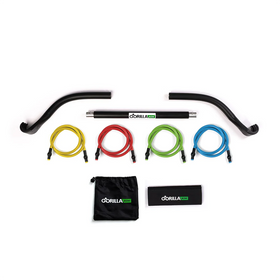
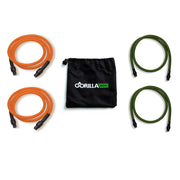
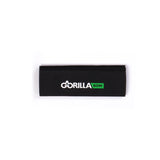
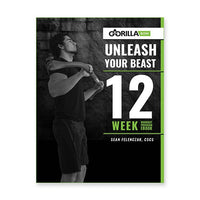
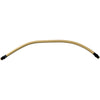



Leave a comment